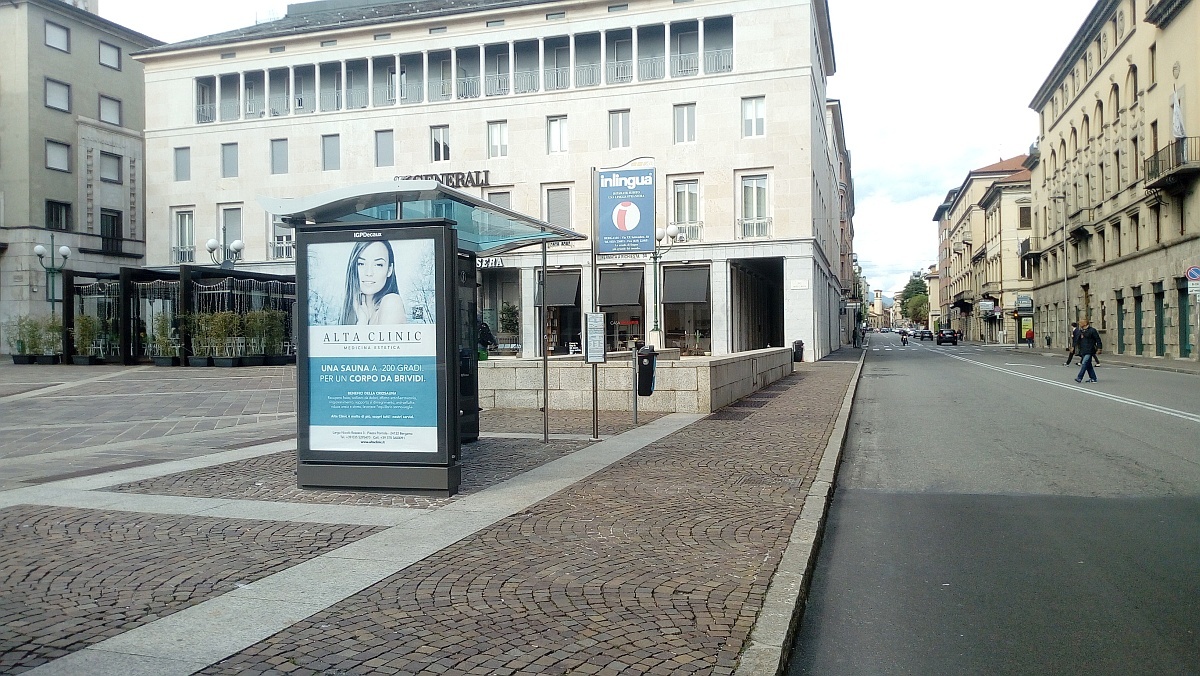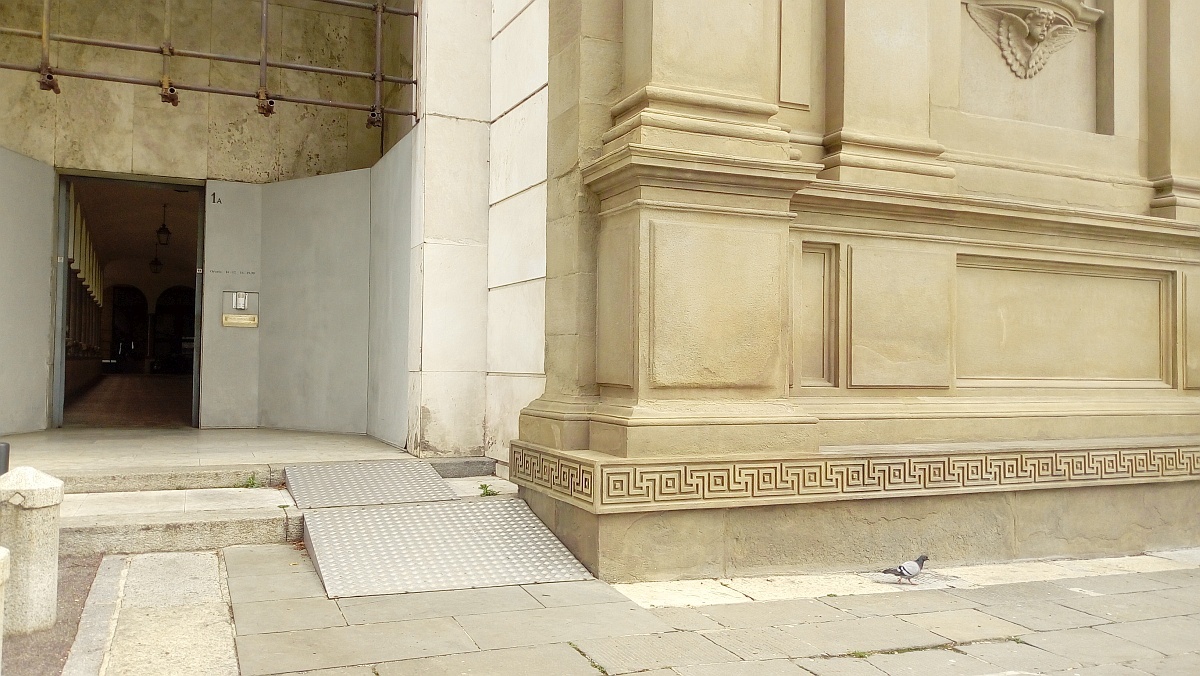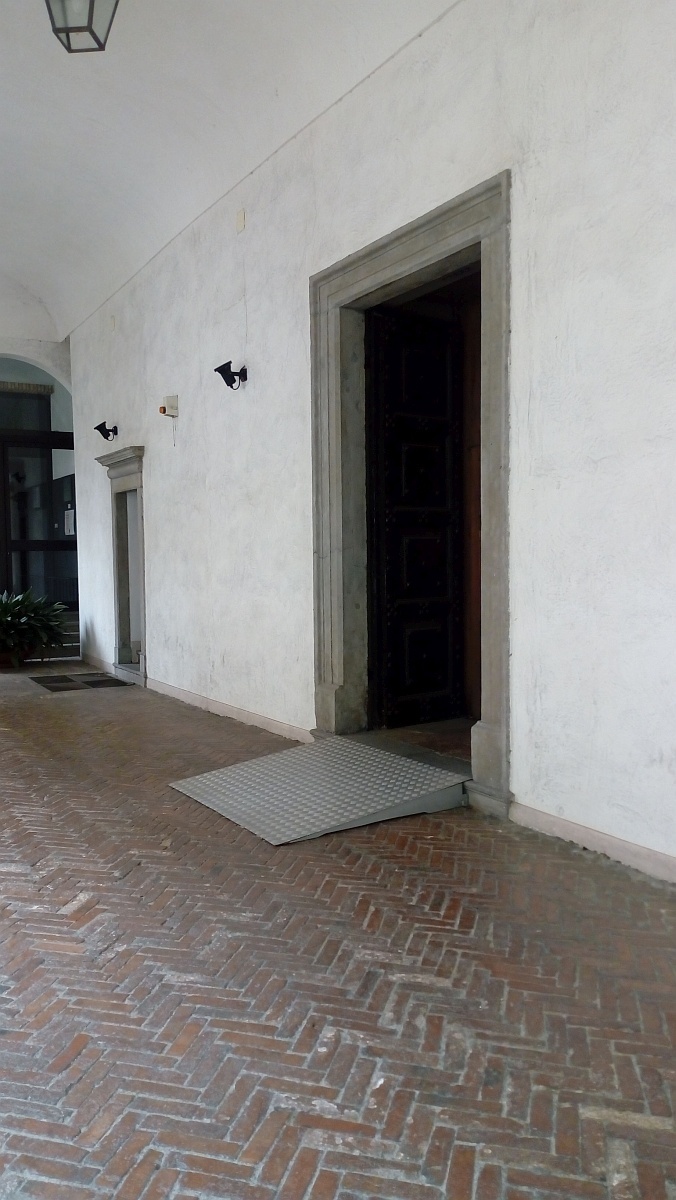At the end of the eastern arm of the Sentierone you can visit the Church of Saints Bartholomew and Stephen, built for the Dominican Order in the first half of the 17th century to a design by architect Antonio Maria Caneva.
That of the Dominicans was not the first religious order to inhabit these sites; in fact, the site previously belonged to a community of the Order of the Humiliati.
The structure at the time was more complex and included a church and farmhouses.
Looking at the exterior of the church, however, you will be able to notice the successive eras of the building’s construction: the façade of Baroque imitation was redone in 1897, the outside porch on the left in 1942, and the side on Via Tasso is 19th century.
Cross the threshold and you will find a single nave with five chapels on each side.
The chancel is decorated with 16th-century inlays, and behind the high altar…you’ll finally be able to admire Lorenzo Lotto’s world-famous Martinengo Altarpiece, dating from 1516.
The church of Saints Bartholomew and Stephen is located in the lower part of Bergamo, between Via Torquato Tasso and Largo Belotti, in the area formerly known as “Prato di S. Alessandro” and closes the so-called Sentierone, i.e., the pedestrian street in the center of Bergamo, a traditional promenade for the people of Bergamo.
Officiated by the Friars Preachers – Dominicans
The church, of very remote origin, was rebuilt in the first half of the 12th century, between 1603 and 1642, based on a design by Como architect Anton Maria Caneva (Porlezza 1550-Bergamo 1610), first officiated on May 6, 1623, and consecrated on January 19, 1782, by Msgr. Giovanni Paolo Dolfin, bishop of Bergamo.
The temple has a simple yet elegant and grand structure, measuring 60 meters long and 14 meters wide, excluding the chapels.
The main facade, completed in the late 19th century by architect Giovanni Cuminetti, is a perfect example of a Baroque masterpiece.
In the central section, vertically, are four female statues depicting the cardinal virtues, the work of the young sculptor Andrea Paleni.
A little higher up, two magnificent relief panels made by Bergamo sculptor Luigi Pagani (1829 – 1904), depicting the martyrdom of St. Bartholomew and that of St. Stephen, can be seen.
Inserted in the two in the two niches are two sculptures by Giovanni Avogadri (1885 – 1971) depicting St. Francis, left, and St. Dominic, right, in white marble blocks.
In the lunette above the central doorway is Luigi Galizzi’s fresco depicting the handing over of the Rosary by the Virgin to St. Dominic, with St. Catherine of Siena next to it.
Inside, the church features important works of art, such as frescoes by Mattia Bortoloni and Gaspare Diziani, works by Picenardi, Brena, Enea Talpino called the Salmeggia, Coppella, Ricchi called the Lucchese, Orelli, Salis, Discepoli called the Zoppo, Facheris called the Cavarsegno, Damiani and Anselmi; noteworthy are the wooden inlays by Fra’ Damiano Zimbelli and, of course, the famous “Martinengo Altarpiece” by Lorenzo Lotto.









